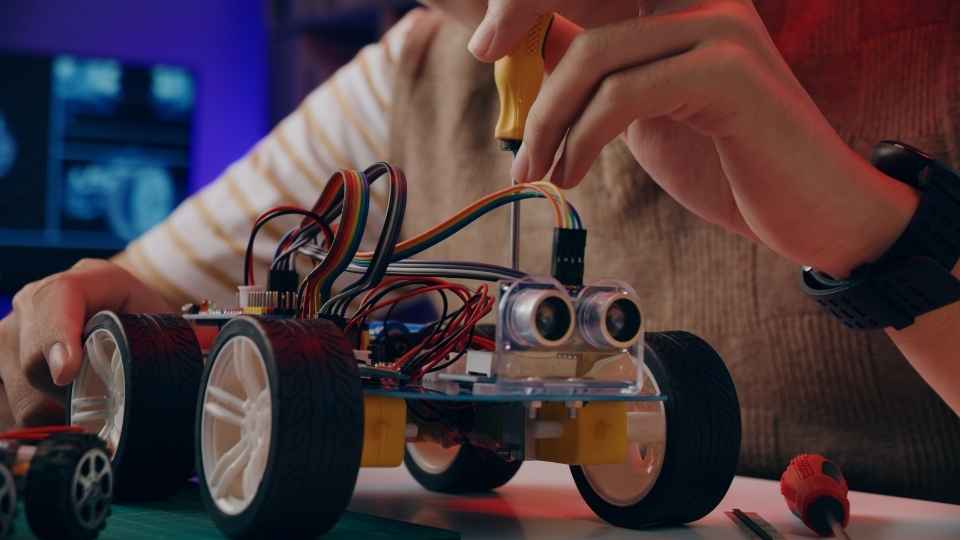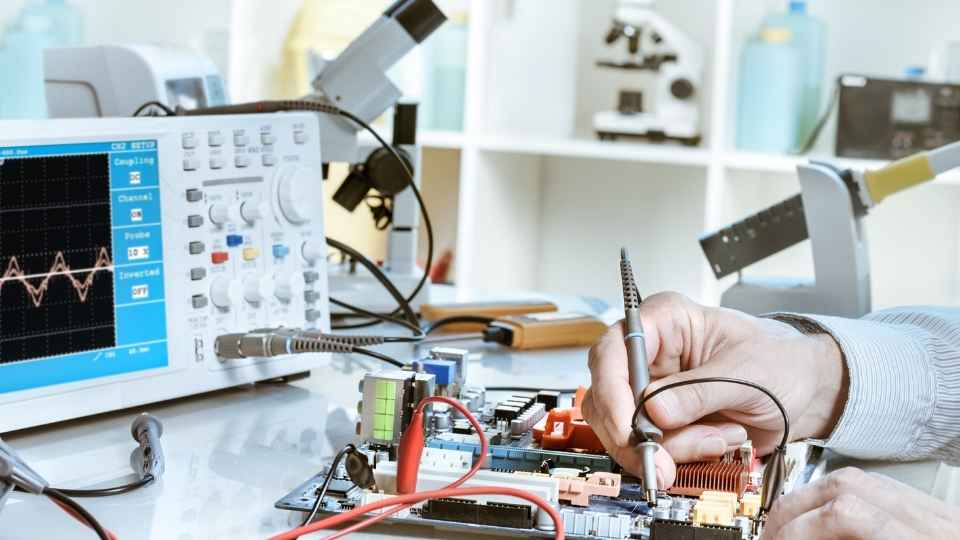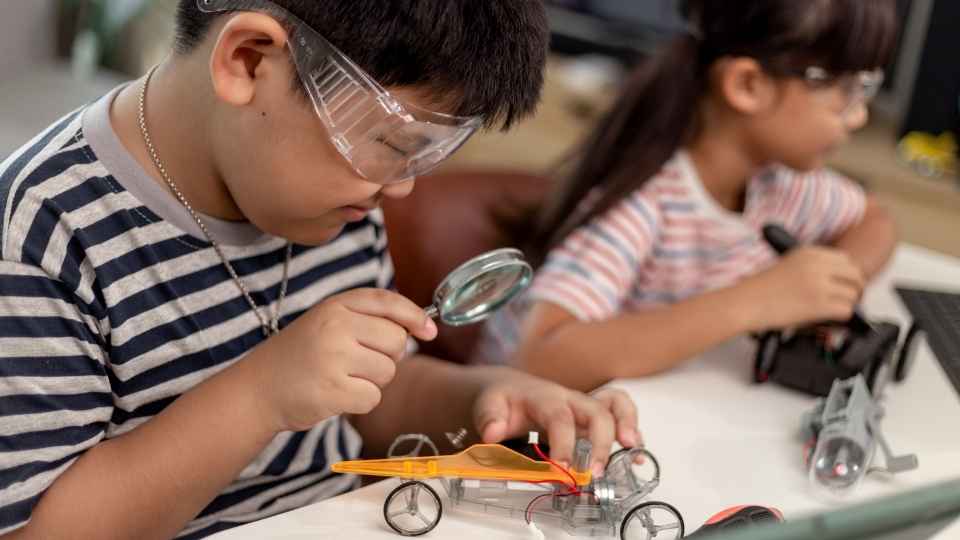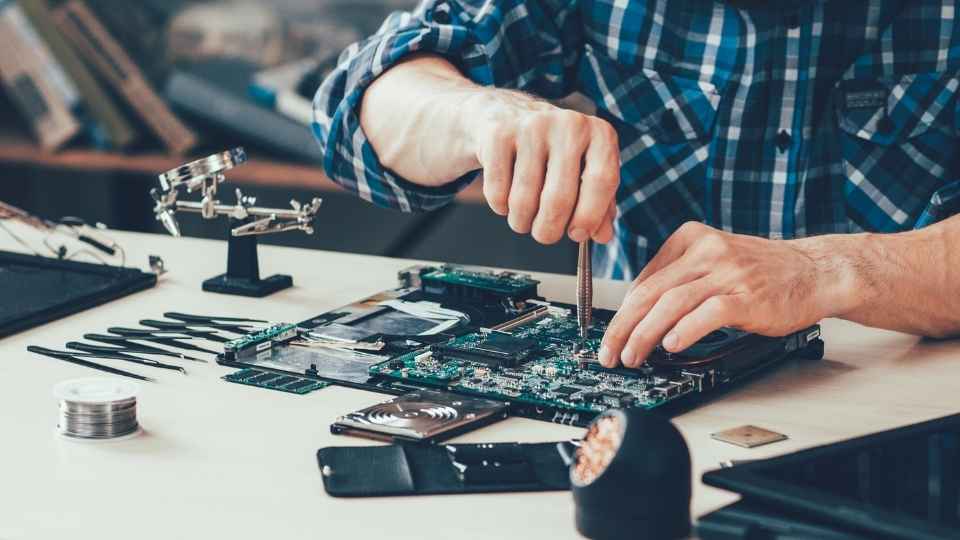
Welcome to the world of electronic components, where the smallest and seemingly insignificant elements hold immense power in shaping our modern technological landscape.
From resistors that control electrical current to capacitors that store energy, each core component plays a vital role in the intricate circuits that power our devices.
In this article, we will delve into the technical intricacies of these components, exploring their functions and shedding light on their significance in creating seamless electronic systems.
Get ready for a deep dive into the fascinating world of electronic components and their indispensable functions.
Key Takeaways
- Resistors limit or control the flow of electric current in a circuit.
- Capacitors store and release electrical energy.
- Diodes allow the flow of current in one direction and block it in the opposite direction.
- Transistors amplify and switch electrical signals within electronic circuits.
The Function of Resistors
Resistors are passive electronic components that limit or control the flow of electric current in a circuit. They are fundamental elements in electrical engineering and play a crucial role in various applications. A resistor's primary function is to impede the flow of current, converting electrical energy into heat dissipation. This characteristic allows resistors to regulate voltage levels, protect sensitive components from excessive current, and set specific values for currents and voltages within circuits.
The resistance value of a resistor determines its ability to restrict the flow of electrons. It is measured in ohms (Ω) and can range from small fractions to several megaohms. Resistors are created by using materials with high resistivity, such as carbon film or metal alloy wires. These materials provide controlled resistance while maintaining stability under different environmental conditions.
Understanding Capacitors
Capacitors, an essential element in electronic circuits, store and release electrical energy. These devices are widely used in various electronic systems due to their ability to regulate voltage and filter noise. Here are three important aspects of capacitors that evoke a sense of freedom:

Energy Storage: Capacitors can store electrical energy when charged, allowing them to hold a charge and release it when needed. This capability provides the freedom to control the flow of electricity in a circuit.
Time Constants: Capacitors have specific time constants that determine how quickly they charge or discharge. By selecting capacitors with different time constants, engineers have the freedom to design circuits with precise timing requirements.
Filter Capacitance: Capacitors can be used as filter components to remove unwanted noise or ripple from power supplies. This filtering capability enables smooth and uninterrupted operation, giving users the freedom to enjoy reliable electronic devices.
Understanding these aspects of capacitors sets the stage for exploring diodes, another crucial component in electronic circuits.
Exploring Diodes
Diodes are electronic components that allow the flow of current in one direction while blocking it in the opposite direction. They are typically made from semiconductor materials such as silicon or germanium and consist of a P-N junction.
Polarity of Diodes
The correct polarity of a diode is crucial for ensuring the proper flow of current through an electronic circuit. A diode is a two-terminal electronic component that allows current to flow in one direction and blocks it in the opposite direction. The polarity of a diode refers to the orientation of its terminals, which determines its behavior within a circuit.
Here are three reasons why understanding and maintaining the correct polarity of diodes is essential:

Efficient current flow: When a diode is correctly oriented, it allows current to flow freely, minimizing power losses and ensuring efficient operation.
Protection against reverse currents: By blocking reverse currents, properly polarized diodes protect sensitive components from damage caused by incorrect voltage levels.
Reliable circuit performance: Maintaining the correct polarity ensures that all components within the circuit receive the intended voltage levels, leading to reliable and predictable performance.
Forward and Reverse Bias
Understanding the behavior of diodes in forward and reverse bias is crucial for designing efficient and reliable electronic circuits.
In forward bias, the anode of the diode is connected to a higher potential than the cathode, allowing current to flow easily through the diode. The forward voltage drop across a silicon diode is typically around 0.7V. This characteristic makes diodes useful for rectification purposes in power supplies.
On the other hand, in reverse bias, the anode of the diode is connected to a lower potential than the cathode. This setup blocks current flow through the diode due to a high barrier potential between P-type and N-type materials within it. However, if reverse voltage exceeds a certain threshold known as breakdown voltage, current can flow freely through the diode.
Understanding these behaviors allows designers to optimize their circuitry by choosing appropriate operating conditions for each component.

Transitioning from understanding diodes in bias states, we can now explore how transistors play a vital role in amplifying signals and controlling electronic circuits.
The Role of Transistors
Transistors play a crucial role in amplifying and switching electrical signals within electronic circuits. These small, semiconductor devices have revolutionized the field of electronics and are essential components in various applications, from computers to smartphones.
Here is a list of three key functions that transistors provide:
Amplification: Transistors can amplify weak electrical signals, allowing them to be boosted to a level suitable for further processing or transmission.
Switching: Transistors act as electronic switches, controlling the flow of current through a circuit by either allowing it to pass (on state) or blocking it (off state).
Logic Operations: Transistors are used in digital circuits to perform logical operations such as AND, OR, and NOT, forming the basis of modern computing.
With their ability to amplify and control electrical signals, transistors enable the creation of complex electronic systems that provide individuals with the freedom to communicate, collaborate, and innovate in today's technologically advanced world.

Significance of Inductors
Inductors play a crucial role in electronic circuits by storing energy in their magnetic fields. This property makes them significant components for various applications, such as filtering out unwanted frequencies and reducing noise.
Additionally, inductors also affect the impedance of a circuit, influencing its overall behavior and performance.
Inductor Applications in Circuits
Inductor applications in circuits encompass a wide range of functions, including energy storage, noise suppression, and signal filtering. These versatile components play a crucial role in electronic systems by performing various tasks that contribute to the overall functionality and performance of the circuit.
Some of the key applications of inductors include:
Energy Storage: Inductors are used to store electrical energy within a magnetic field generated by current flowing through its coils. This stored energy can then be released when needed, making inductors vital for power supply stabilization and voltage regulation.
Noise Suppression: In circuits, unwanted electromagnetic interference (EMI) or radio frequency interference (RFI) can cause disruptions and affect the performance of electronic devices. Inductors are used to filter out these unwanted noises by creating impedance against high-frequency signals.
Signal Filtering: Inductors are also employed as passive filters to remove or attenuate specific frequencies from signals passing through them. By selectively allowing certain frequencies while blocking others, inductors aid in achieving precise signal conditioning and optimization.

Inductor Role in Energy Storage
The utilization of inductors in energy storage systems is crucial for maintaining stability and regulating voltage levels. Inductors store energy in the form of a magnetic field when an electric current passes through them. This stored energy can be released back into the circuit when needed, providing a stable power supply and preventing voltage fluctuations.
Additionally, inductors help to filter out unwanted noise and harmonics from the electrical signal, improving overall system performance. The size and value of the inductor determine its ability to store energy, with larger inductors capable of storing more energy. However, it is important to carefully select the appropriate inductor for each application to ensure optimal efficiency and performance.
In the subsequent section about 'inductor impact on impedance', we will explore how inductors affect the impedance of a circuit and their role in frequency-dependent resistance.
Inductor Impact on Impedance
Impedance in a circuit is influenced by the presence of inductors, as they introduce reactance that can affect the flow of current. The impact of inductors on impedance is crucial to understand for those seeking freedom in designing electronic circuits. Here are three key points regarding this relationship:
Increased Inductance:
As the inductance value increases, so does the reactance introduced into the circuit. This higher reactance leads to an increase in impedance, reducing the flow of current.
Frequency Dependency:
The effect of inductor-induced reactance on impedance varies with frequency. At low frequencies, where reactance is minimal, impedance is dominated by resistance. However, at high frequencies, where reactance becomes significant, impedance is mainly determined by it.
Filtering Capabilities:
Inductors can be used strategically to create high-pass or low-pass filters that allow certain frequencies to pass while attenuating others. This ability provides designers with the freedom to shape and control signals according to their requirements.

Understanding how inductors impact impedance empowers designers to manipulate currents and frequencies effectively, enabling them to achieve desired outcomes and design complex electronic systems with freedom and precision.
Other Core Electronic Components and Their Functions
Capacitors are essential electronic components that store and release electrical energy, providing filtering, smoothing, and energy storage functions in various circuits. They consist of two conductive plates separated by an insulating material called a dielectric. When a voltage is applied across the plates, positive charges accumulate on one plate while negative charges accumulate on the other. This creates an electric field between the plates, resulting in stored electrical energy.
Capacitors have numerous applications in electronic devices. In power supply circuits, they act as energy reservoirs, smoothing out voltage fluctuations and ensuring a steady power output. They also play a crucial role in audio systems by blocking direct current (DC) while allowing alternating current (AC) to pass through, thus eliminating any unwanted noise or interference.
Additionally, capacitors can be used for timing purposes in oscillators and filters to control signal frequencies. They are also employed in motor start circuits where they provide a momentary surge of power during startup.
Frequently Asked Questions
What Are the Different Types of Resistors and How Do They Vary in Terms of Their Functions?
There are various types of resistors with different functions. These include carbon composition resistors, film resistors, wire wound resistors, and variable resistors. Each type has its own unique characteristics and is used in specific applications.
How Do Capacitors Store and Release Electrical Energy, and What Are the Factors That Determine Their Capacitance?
Capacitors store electrical energy through the separation of charges on their plates. When connected to a power source, one plate accumulates positive charge while the other accumulates negative charge. The capacitance of a capacitor depends on factors such as plate area, distance between plates, and dielectric material used.
Can Diodes Be Used for Purposes Other Than Rectifying Currents and Voltage Regulation?
Diodes have various applications beyond rectifying currents and voltage regulation. They can be used for signal conditioning, switching operations, and protection against reverse polarity. Their versatility makes them an essential component in electronic circuits.

What Are the Different Types of Transistors and How Do They Differ in Terms of Their Functionality?
There are several types of transistors, including bipolar junction transistors (BJTs) and field-effect transistors (FETs). BJTs are current-controlled devices, while FETs are voltage-controlled. Each type has its own characteristics and functionalities, making them suitable for different applications.
Inductors contribute to circuit performance by storing and releasing energy in the form of magnetic fields. Common applications include power supplies, filters, and antennas. Their ability to store energy makes them vital components in various electronic devices.
 Basic Electronics ConceptsEssential ToolsCircuit Design BasicsMicrocontrollersDIY Electronics ProjectsRoboticsPrivacy PolicyTerms And Conditions
Basic Electronics ConceptsEssential ToolsCircuit Design BasicsMicrocontrollersDIY Electronics ProjectsRoboticsPrivacy PolicyTerms And Conditions
